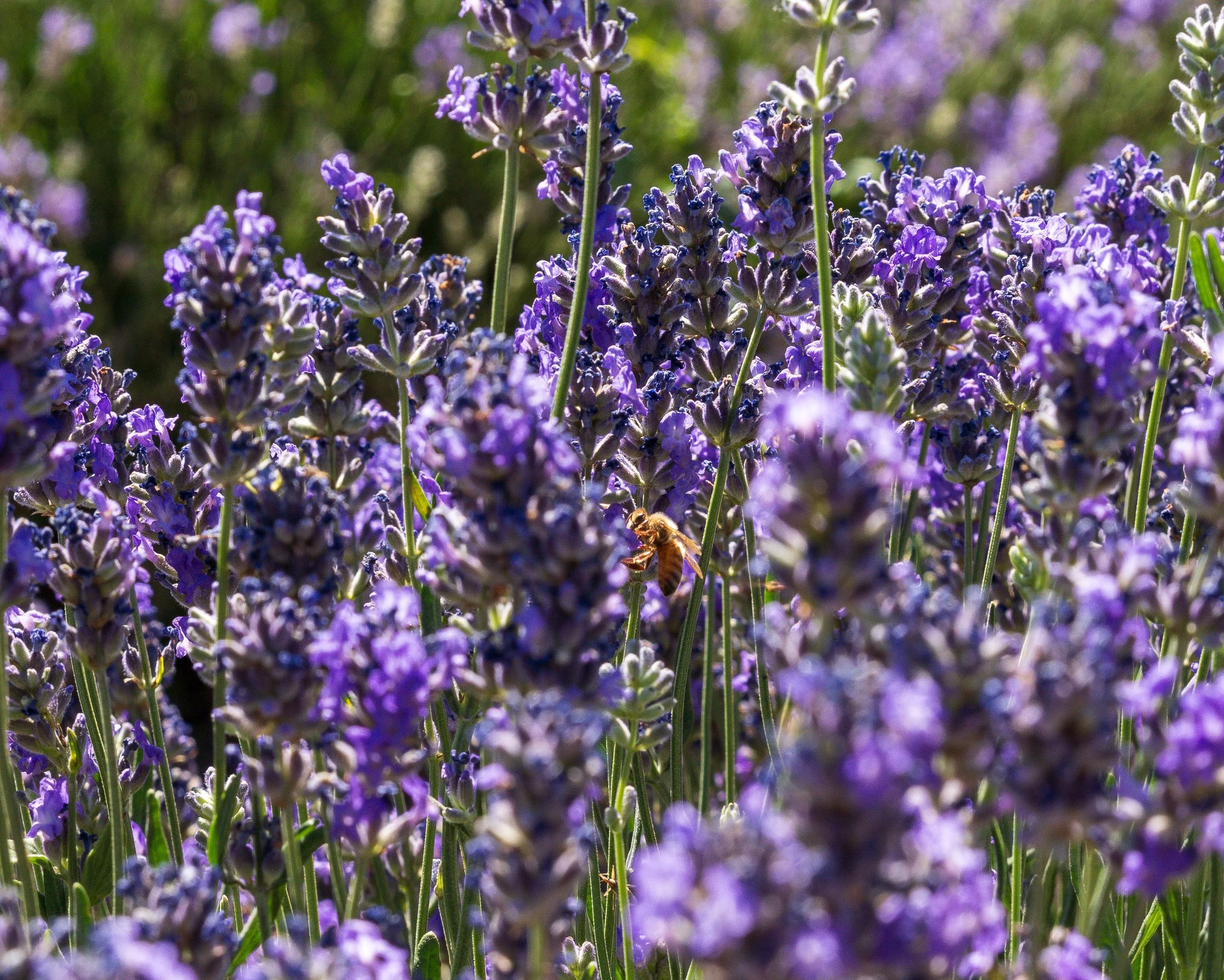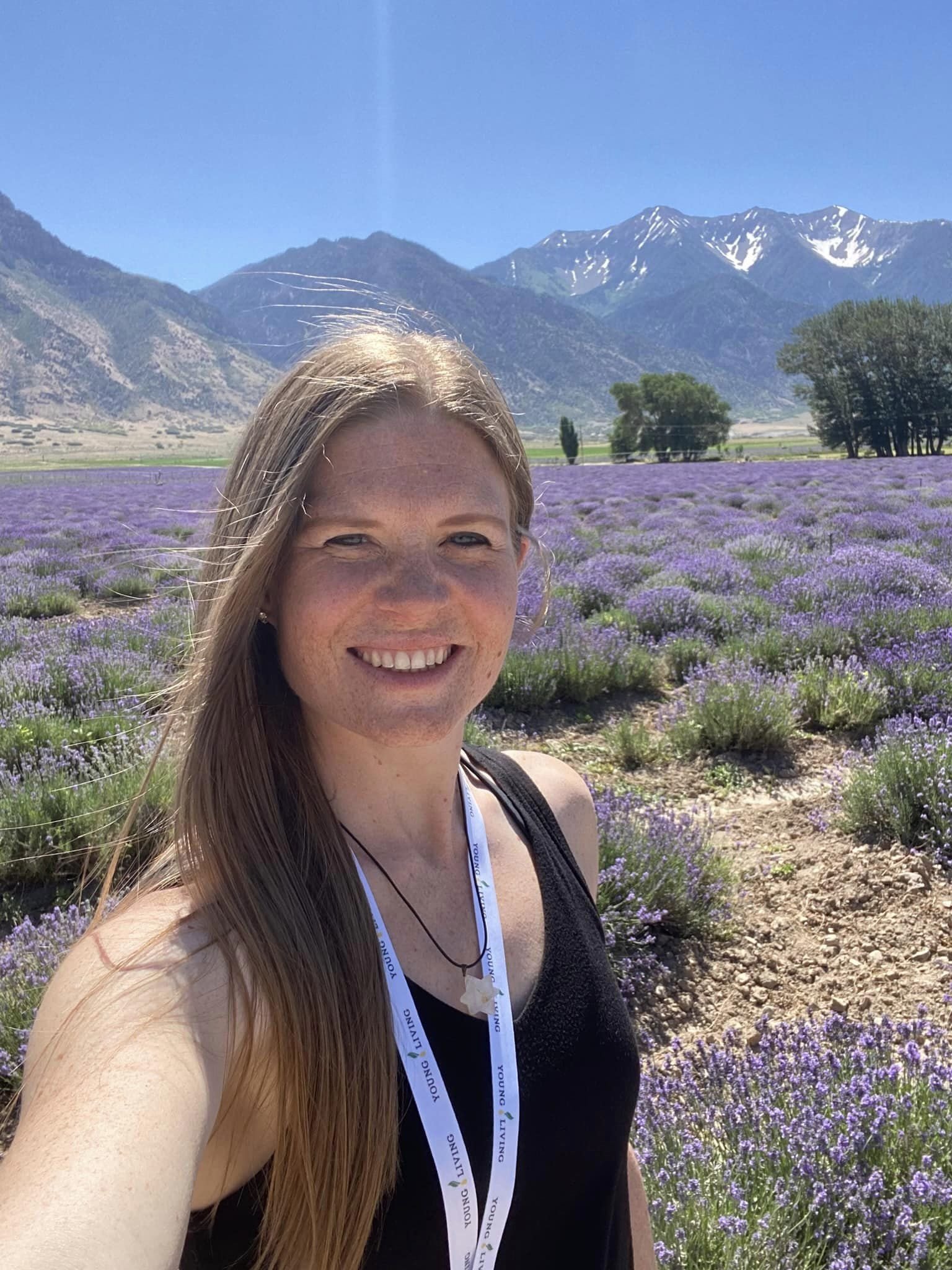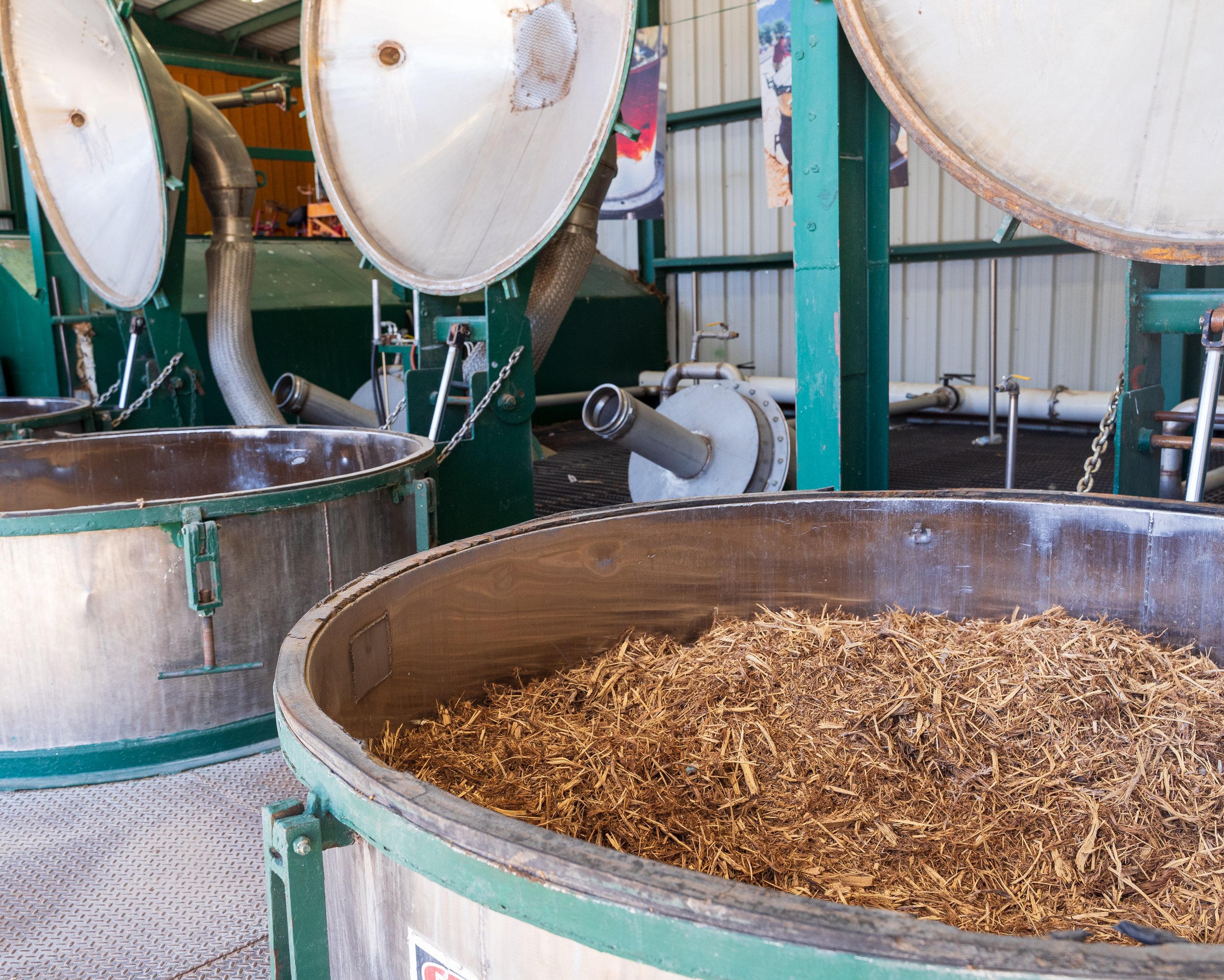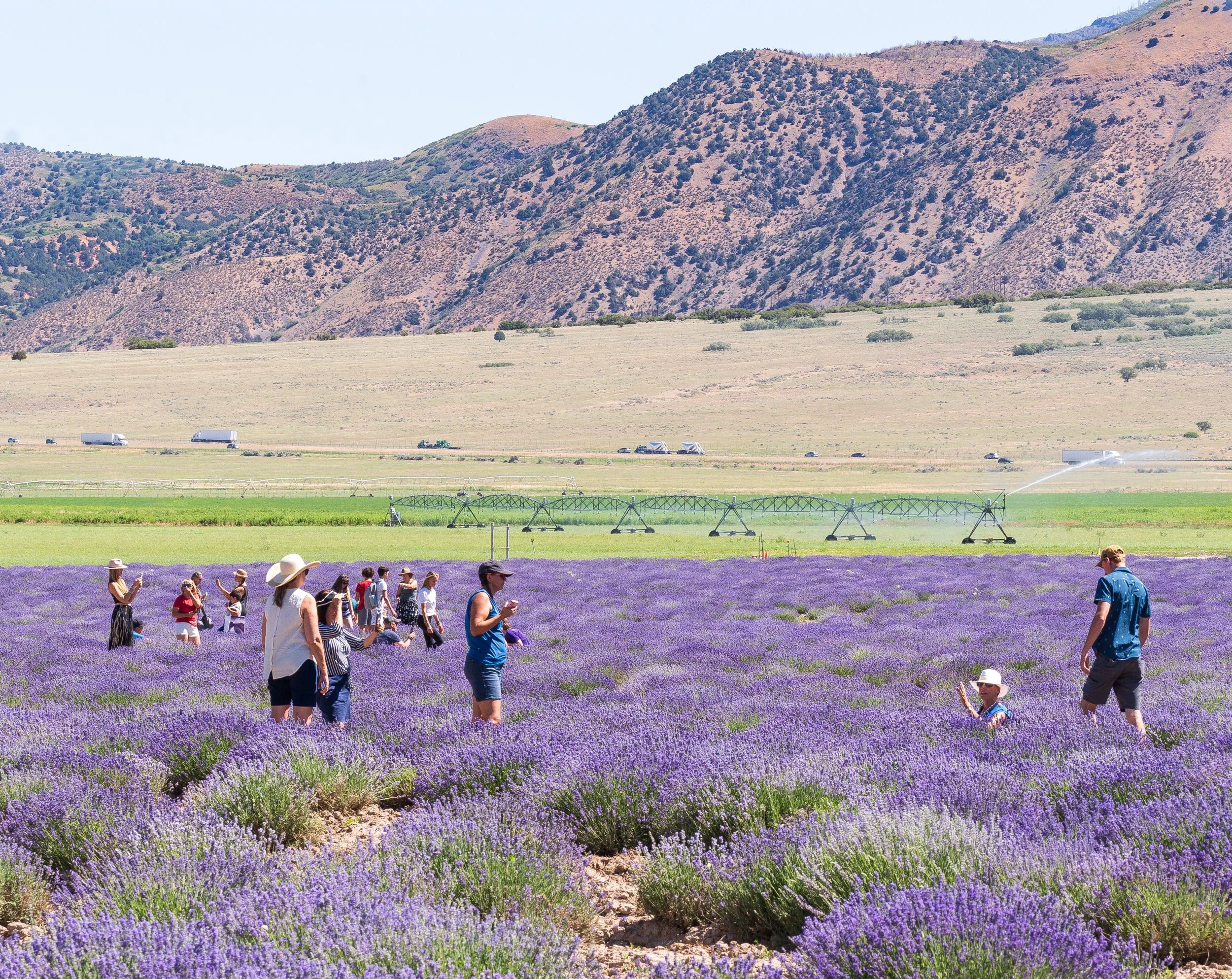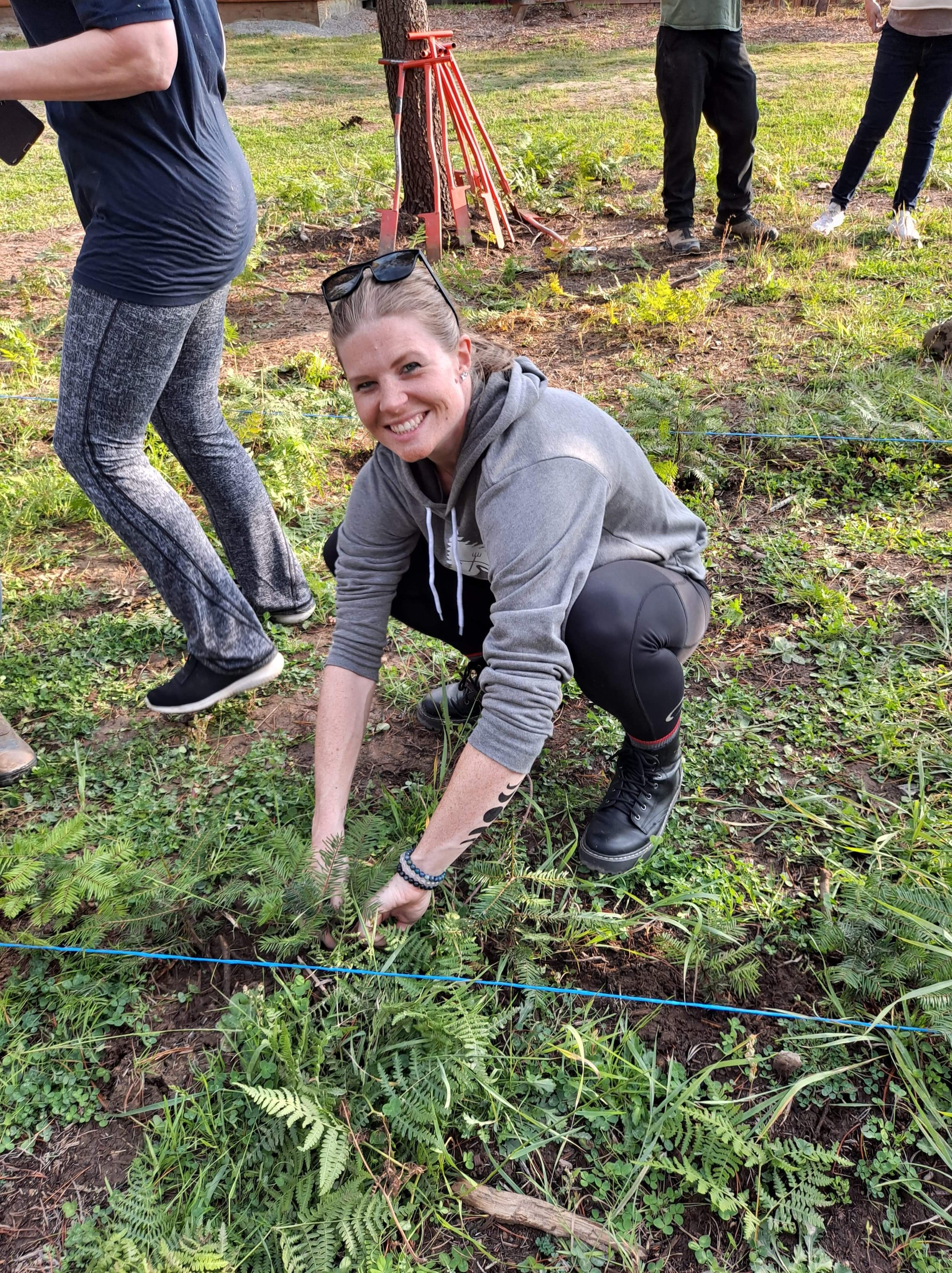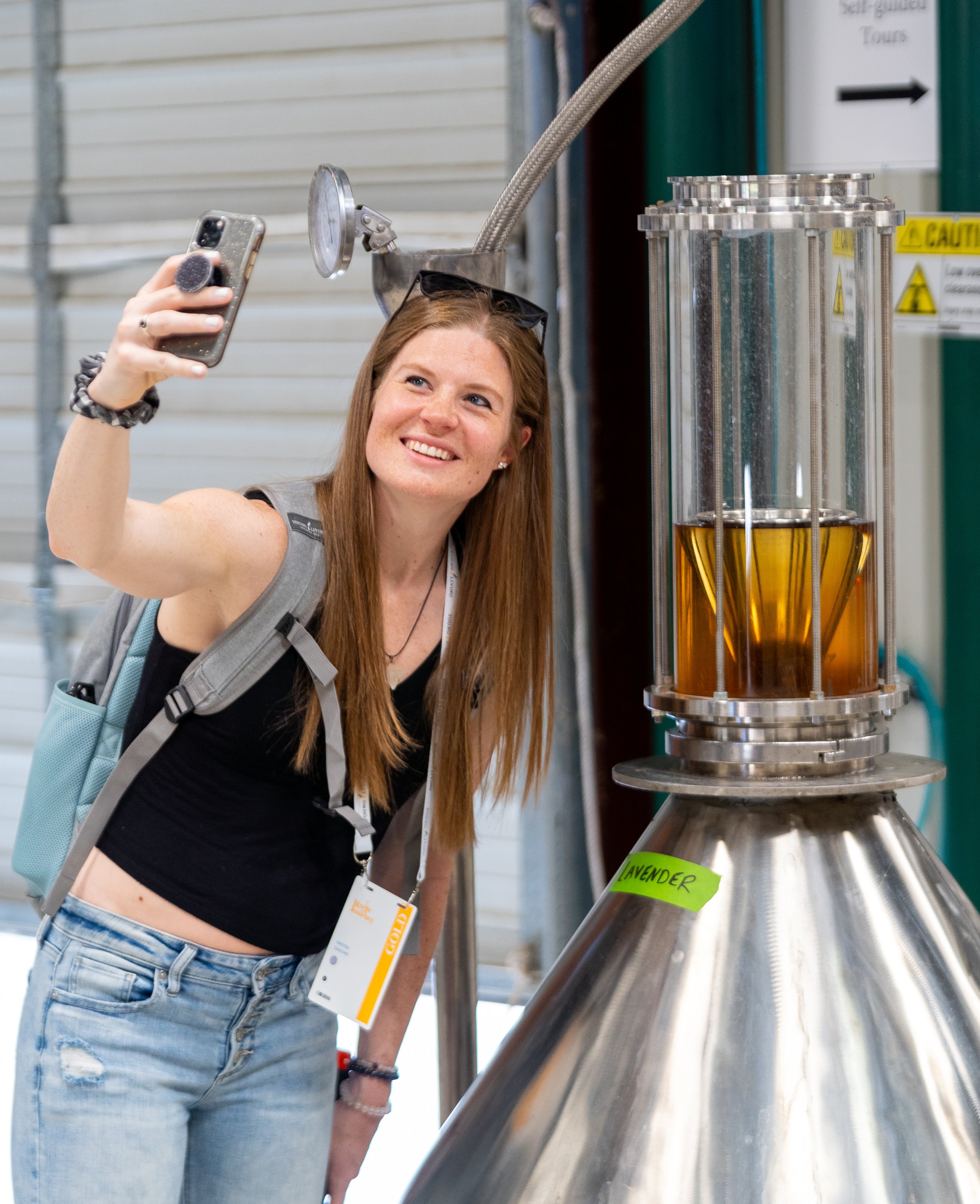
Quality Standards
How are your essential oils produced?
There are many essential oil companies out there -- how to choose?
Below are facts about the company we chose to partner with, as well as some important points to consider when in the market for essential oils. The highest quality doesn't just apply to essential oils -- Young Living® also provides products to support creating a healthier home environment, a healthy body, and a healthy mind.
A new study published in early 2024 in the Journal of Essential Oil Research (JEOR) analyzed 41 authentic lavender essential oil samples from trusted producers and research partners worldwide.
Comparing these findings to 12 commercially available samples, the study found that 9 out of 12 (75 percent) of those tested were adulterated, showing signs of potential dilution or addition of another oil as a substitute.
As the global leader in the industry, Young Living takes the authenticity of our essential oils very seriously. YL conducts rigorous testing of all our products and publish test results in a digital library available for customers on the Young Living website.
While quality may start in the field, it’s proven in the lab. The exciting results of this study reinforce Young Living’s longstanding Seed to Seal® commitment to the highest-quality products. View Study
What is the adulteration of essential oils?
Many oils sold on the market are adulterated or extended with the use of synthetic chemicals. Scent can be engineered and imitated but the entire constituent of true essential oils cannot be duplicated. Only nature can create whole-body-supporting essential oils.
Adulteration is intended for the fragrance and not for the beneficial health of the body. An example is adding dipropylene glycol to Lavender to hulk up the oil. DPG is colorless and odorless.
About 90% of every single oil readily available in the United States is unsafe for infants because they use synthetics or contain harmful-to-babies fillers.
The Young Living Essential Oils Sourcing Standard helps ensure a high level of quality and authenticity of essential oils while encouraging responsible practices of production and processing at all stages in the supply chain.
Young Living Essential Oils, is working with SCS Global Services (SCS) – a global expert in environmental and sustainability certification, standards development, responsible sourcing, and business solutions – on the details of the development and implementation of the Young Living Essential Oils Sourcing Standard.
Supply Chain
The Young Living Essential Oils Sourcing Standard applies to all stages of the Young Living essential oil supply chain, including farms, wildcrafting operations, processing facilities (e.g., distilleries), as well as Young Living-owned facilities. It applies to Young Living corporate-owned farms, partner farms, and Seed to Seal-certified suppliers.
Sourcing Standard Details
Young Living and all of our partners must meet the highest standards in:
Authentication
Agricultural Practices
Harvesting & Collection
Extraction & Distillation Practices
Testing
Traceability
Storage & Bottling
Seed to Seal Promise
Young Living has a seed to seal guarantee and promise. The company abides by very strict guidelines to fulfill this promise to us.
Young Living owns its own farms, which no other major company does. It has partner farms that have to abide by the same standards.
Young Living won’t plant on soil that has been in contact with ANY chemicals within 50 years. (Organic standards are only five years)
Young Living picks the absolute best seeds from strong thriving plants.
Young Living hand weeds and uses its own oils on plants for pest control to avoid harmful chemicals.
Young Living harvests at peak times.
Young Living distills on-site without chemicals.
Young Living tests every batch multiple times throughout the process with state-of-the-art equipment.
All of these factors make a huge difference in quality and effectiveness. If a batch doesn’t meet YL standards for any reason, it doesn't get bottled up to distribute. YL would rather have something go out of stock than let an inferior product slip through to us. It's rare to find a company with such high standards.
The Young Living Difference
Testing: All done in TRIPLICATE, TWO separate times.
Viscometry
Densitometry
Refractometry
Polarimetry
ICP-MS
ICP-OES
Gas Chromatography (GC)
HPLC
Fourier Transform Infrared Spectroscopy
Automated Micro-Enumeration
Disintegration Testing
pH
Flashpoint
Microscopy
Combustibility
Chiral Chromotograph
Isotope Ratio Mass Spectometry (IRMS)
Additional facts about Young Living®:
Known supply chain
Grows their own products
Extensive farm quality control
Walk the farms - Young Living farms are open to the public to explore
Specific plant species cultivated
Extensive clinical testing
Has developed an Over-the-Counter approved line of products
Scientifically-supported claims
Invests in continued research
Gives back to communities
Supports small business
Sensitivities to Young Living Essential Oils
"There are a couple of ways one can be sensitive to essential oils, but an allergic reaction is not one of them. Allergies are erroneous immune responses to proteins, peptides, and amino acids – all nitrogen compounds, none of which are found in essential oils." - Dr. David Stewart, PhD, Chemist Source/Learn more
Essential Oil / Government Regulations as per FDA website
"There is no regulatory definition for ‘essential oils’, although people commonly use the term to refer to certain oils extracted from plants. The law treats ingredients from plants the same as those from any other source." Source
Which means that if a company is diluting their oils by 10, 40, 60% and labelling it organic and 100% Pure, it’s not a regulated industry, and they can get away with it.
This is why Young Living is transparent during EVERY step of the process.
Source: U.S. Food & Drug Administration
Essential Oil Application Models/Schools
In the world of essential oils, you may find that there are different standpoints on how to use essential oils safely. We aim to equip you with important information to help empower you to know what you're buying. There is a lot of fear that develops from misinformation, and first and foremost we want you to feel comfortable and confident with using essential oils.
It is very important to understand that there is no strict regulation in regard to the quality and purity of essential oils on the market. With that said, it is important to know the sourcing of your essential oils. Read more on Essential Oils Quality Standards.
There are a lot of misconceptions in the world about how essential oils should be applied, but I believe it all comes down to one thing: PURITY. This piece is to educate you on why Young Living teaches up to use the oils in the ways that we do - aromatically, topically, and internally.
In the aromatherapy world, there are 3 different schools of aromatherapy application:
The German model
The British model
The French model
We'll learn more about these below...
Regulations in Place by the Government
According to the FDA, essential oils can fall under a couple of categories: a cosmetic, and a dietary supplement.
When considering cosmetics, the legal background is this:
FDA requires cosmetics to have an “ingredient declaration,” a list of all the product’s ingredients. FDA requires this labeling under the Fair Packaging and Labeling Act. This law is intended to make sure consumers have information they can use to compare the value of different products and make informed choices.
But according to the FPLA, regulations for this list of ingredients must not be used to force a company to disclose “trade secrets”.
For example, fragrance and flavor ingredients do not need to be listed individually on cosmetic labels, because they are the ingredients most likely to be “trade secrets.” Instead, they may be listed simply as “fragrance” or “flavor”.(1)
When considering dietary supplements, as many essential oils fall under the GRAS category, or "Generally Regarded As Safe" to consume internally, according to the FDA, a dietary supplement product label should answer the following questions:
What is the name of the product?
How much product is in the package?
Who made/packed/distributed it?
What ingredients are in it?
What is the nutritional content?
The last two questions are answered by the Supplement Facts panel, which must identify ALL ingredients contained in the product and their amounts. However, some of the ingredients may be part of a mixture of ingredients, otherwise known as "proprietary blend", “blend” or “delivery system.” In this case only the total amount of the mixture of ingredients is required.(2)
The Three Models of Aromatherapy
Therapeutic treatment using essential oils follows three different models: English, French, and German.
The British model is what most aromatherapists who are ‘certified’, and is oftentimes reflected in education outlets of aromatherapy. The British model teaches to puts a small amount of an essential oil in a large amount of vegetable oil to massage the body for the purpose of relaxation and relieving stress. This is the most commonly-taught application of essential oils among trained aromatherapists. This train of thought comes from the British government knowing the industry has no true standard for knowing which essential oils sold on the market are truly 100% pure. For example, it's said that the country of France exports 10-times more lavender oil than they actually produce. What does that mean for the consumer?Well, you don't truly know what you're getting in that bottle -- even if it says "100% Pure" on the label! Keep in mind that what you apply to your skin gets absorbed into your body and detoxed by your kidneys and liver.
The French model prescribes neat (undiluted) topical application of therapeutic-grades essential oils and/or the ingestion of pure essential oils. Typically, a few drops of an essential oil are added to agave nectar, honey, a small amount of vegetable oil, or put on a piece of bread. Many French practitioners have found that taking the oils internally yields excellent benefits. As we mentioned above, there are many essential oils that are classified as GRAS, however again, it's most important to know the source of the oils you are consuming. With Young Living's essential oils, the consumer knows which oils can be used internally by the white Vitality label distinction.
The German model focuses on inhalation of essential oils — the true aromatherapy. Research has shown that the effect of fragrance on the sense of smell can exert strong effects on the brain — especially on the hypothalamus (the hormone command center of the body) and limbic system (the seat of emotions). Some essential oils high in sesquiterpenes, such as myrrh, sandalwood, cedar wood, vetiver, and Melissa, can dramatically increase oxygenation and activity in the brain, which may directly improve the function of many systems of the body.
Together, these three models show the versatility and power of essential oils.
In some cases, the inhalation of essential oils might be preferred over topical application, if the goal is to increase growth hormone secretion, promote weight loss, or balance mood and emotions.
In other cases, however, topical application of essential oils would produce better results, particularly in the case of back or muscle injuries or defects.
In some cases, all three methods of application (topical, inhalation, and ingestion) are interchangeable and may produce similar benefits.
The ability of essential oils to act on both the mind and the body is what makes them truly unique among natural therapeutic substances. The fragrance of some essential oils can be very stimulating — both psychologically and physically. The aroma of other essential oils may be calming and sedating, helping to overcome feelings of anxiety or hyperactivity. On a physiological level, essential oils may stimulate the body's natural immune function and regenerate damaged tissue.
Probably the two most common methods of essential oil application are cold-air diffusing and neat (undiluted) topical application. Other modes of application include incorporating essential oils into the disciplines of reflexology, Vita Flex, and acupressure. Combining these disciplines with essential oils enhances the healing response and often produces amazing results that cannot be achieved by acupuncture or reflexology alone. Just 1-3 drops of an essential oil applied to an acupuncture meridian or Vita Flex point on the hand or foot can produce results within a minute or two.(3)
Young Living Essential Oils Labeling
Young Living has made it simple for the consumer to know which essential oils can be used internally by their designated Vitality™ line.
Important Note: The essential oil contained in both of these bottles of peppermint are the same quality and purity. The only difference is the label. If you have a Young Living essential oil that does not have a Vitality labeled-version, it is not advised to use that essential oil internally.
Be educated, know your stuff, and educate others! Most people do not realize that there are different models of application and maybe will only assume one is right, because that is what they were told first! Again, each of these models follows the purity and quality of the oils that are produced in that country - to “protect the people”. Know the source of the information!
Purity and quality, thanks to the Seed to Seal guarantee, is why we in Young Living promote the use of internal use, topical use (without diluting), and of course aromatic use.
Fun Fact
Gary Young brought back his first seeds from France to start growing Lavandula angustifolia in the states. He was also trained by French experts in the art of distilling, and that’s why Young Living is the purest, highest quality essential oils that we can buy today.
Resources:
(1) - https://www.fda.gov/cosmetics/cosmetics-labeling/trade-secret-ingredients
(2) - https://www.opss.org/article/labeling-requirements-dietary-supplements
(3) - Essential Oils Desk Reference - 7th Edition
Twelve Questions to Ask an Essential Oil Company
by Dr. David Stewart
We are finding ourselves more frequently approached by competing essential oil companies to sell and promote their brand. They always claim to have “pure therapeutic grade” oils “as good or better than those of Young Living.” Maybe they do and maybe they don’t. Here are some questions to ask when approached by another essential oil company:
1. Does their company own any farms on which to raise herbs for oils? And if they do, are they new farms on land formerly polluted with herbicides, pesticides, and chemicals that contain residuals from the past, or are they farming land that is clean, which has never been cultivated or has been untilled for at least the last 50 years?
2. Does their company have their own fully equipped testing laboratory to verify an oil’s composition?
3. Do they have anyone on staff with a trained nose who can analyze oils by their smell? (There are less than 200 people in the world with noses sufficiently trained to discern the chemistry of a fragrance.)
4. If their company purchases oils from outside suppliers, do they visit the distilleries and farms of those suppliers periodically to observe if the herbs are grown organically, i.e. without pesticides, herbicides, or chemical fertilizers?
5. Do they know if the grower has a testing laboratory on the farm to determine when the crop is at its peak for oil harvesting?
6. Do they know if the crops were actually harvested at their peak time and, if so, was there an inordinate delay in taking them to the still and into the cookers?
7. Do they know if their distillery personnel understand the art and science of distilling, exactly how to pack the cookers, how to administer the steam, how to maintain minimum temperatures and pressures throughout the cooker, and how to continuously monitor the process throughout distillation to make sure the oil produced contains all of its components in the proper proportions?
8. If their supplier makes a mistake in the distillation or harvesting processes that results in an inferior grade of oil, does that supplier sell the oil anyway or do they discard it?
9. Do they know if the the cookers in the distilleries of their suppliers have domed lids or cone shaped lids? Most stills use dome-shaped lids. Cone topped cookers deliver a better grade of oil than dome tops.
10. Do they know if their suppliers supplement the distillation process with solvents to extract additional oil from the plant matter?
11. Do they know if their suppliers bottle their oils directly from the distillery without modifying the composition of the natural oil by adding anything or taking anything away?
12. Do they know if their company has tested their company’s oils side by side with Young Living oils in the same lab to make a fair comparison? And if so, where is the data?
This is not a comprehensive list of questions you could ask, but if their answer to any or most of the above is “no,” or “I don’t know,” then how do they know their oils are “pure therapeutic grade” and that they are “as good or better than those of Young Living?” Without such knowledge, how can they make any verifiable claims that compare Young Living Oils with their brand?
With Young Living, you know that the answer to all of these questions is “Yes.”
Young Living owns and operates four large farms in Utah, Idaho, France, and Ecuador, all of which were clean and free of chemicals for at least 50 years before Young Living agreed to buy the land. In fact, the land in Idaho had never been farmed before Young Living, and the Ecuador farm is being cleared from primitive jungle, free from human contamination for thousands of years.
Young Living also has an expertly staffed, fully equipped laboratory for testing oils including a gas chromatograph, a mass spectrometer, and other equipment whose value adds up to hundreds of thousands of dollars.
Young Living also has small labs on their farms to test the plants right from the field as they mature to determine the exact season and time of day to harvest the crop for the best oil. This is necessary because plants change their chemistry throughout the season and throughout the day, varying from week to week and hour to hour.
Gary Young is one of the few people in the world who can smell an oil and tell you what compounds are present, which are missing, and in what quantities. An essential oil company needs a person like that to check every batch of oil to make sure it is up to therapeutic standards. Such people can discern certain aspects of oil chemistry that a laboratory cannot measure.
Young Living markets more than 100 species of oils and cannot possibly raise them all on their own farms. When they purchase from other growers and suppliers, they not only may initial site visits to verify that the oils are being produced and packaged properly, but they have a program of making repeated visits from time to time to make sure the standards are being upheld.
Gary Young has personally trained his distillers in the art of distilling. Besides the science to know exactly how to pack the cookers but the still operator must also learn the art of how to listen to the sounds of the steam inside the cooker and to be able to feel the outside of the cooker and diagnose how things are going inside to determine what adjustments need to be made.
Young Living distills oils at minimum pressures and temperatures to gently coax the oil and all of its compounds into the finished product, even though significant money, time, and labor can be saved by distilling at high pressures and high temperatures, like many companies do. High pressure/high temperature distillation may produce an oil with the fragrance compounds of an oil, but not with the therapeutic compounds. Young Living never uses solvents to finish off the distilling process as many companies do.
By climbing inside of an actual cooker and visually noting the patterns of steam flow, Gary Young was able to determine that a dome-shaped lid caused the oil-bearing steam to curl and back flow into the plant mass, thus altering the chemistry and losing some constituents, while a cone-shaped lid allowed the steam to spiral directly up, out, and into the condenser without turbulence.
Many of the techniques and skills applied in growing and distilling Young Living oils are trade secrets, known only to Gary Young and his trusted employees.
Young Living oils are bottled as they emerge from the still in their complete natural state without adulteration (adding compounds) or refinement (removing compounds).
In a few instances when mistakes were made and a batch of oil grown and distilled by Young Living did not measure up to Gary Young’s standards, the oil was discarded, poured out on the ground. Some companies would have sold such oil anyhow, if not to their customers, then to another retailer. Young Living will never do that. They would rather be in short supply of a given species than to market an inferior product.
While you are asking questions to another company representative, you might also ask how long they have been in business? Young Living was founded in 1991. Gary bought its first farm in 1992 near St. Maries, Idaho, and its second farm in 1995 near Mona, Utah. Gary Young and the company are committed to ensuring a current and future supply of top grade essential oils indefinitely into the future.
If you ever get the opportunity, visit a Young Living farm and distillery and you will begin to see for yourself the care and dedication it takes to produce the finest essential oils in the world.
The factors that make Young Living unique and outstanding in the world of essential oil companies are so numerous they cannot all be presented in an article like this. When your life and your health are depending on it, you cannot afford to use oils whose chemistry and origins are uncertain. I have complete trust in the quality and integrity of Young Living oils. That is why I will neither use nor consider any other brand.
Over 25 years of Stewardship
Millions around the world have discovered the benefits of pure essential oils, derived naturally from plants. Young Living is committed to establishing and maintaining the ultimate, industry-leading standard in essential oil products. For Young Living, the non-negotiable benchmarks for delivering a product that their customers can feel great about are multifaceted and exacting. Young Living is proud to offer an extensive line of essential oils and essential oil-infused, plant-based products that represent the best of nature—through the standards of our Seed to Seal quality commitment.
Young Living embraces a rigorous quality control standard to help ensure our products meet strict specifications. Seed to Seal is our commitment that helps ensure that with every pure essential oil and Young Living product your family uses, you’re enjoying the benefits of our global resources, industry leadership, and over two decades of innovation. The result? A pristine final product that you know has been created with conscientious Sourcing, Science, and Standards—the three pillars of Seed to Seal.
As the leader of the essential oils movement, Young Living is paving the way for every other essential oil company to improve processes that protect our planet and ensure the highest quality standards.
Watch these videos to learn more about how Young Living is driven by a desire to serve the global community and to inspire our employees and customers around the world.
Sourcing
Sourcing guides the process by which we obtain essential oils from our corporate farms, partner farms, and Seed to Seal-certified suppliers by ensuring that the production of these products is the highest quality.
Science
Science guides the formulation and stringent testing of our essential oils, products, and ingredients to deliver pure, effective essential oils and innovative wellness products that meet our rigorous quality standards.
Young Living’s Three Pillars
Standards
Standards guides the compliance measures taken throughout our sourcing process to ensure all domestic and international legal guidelines are adhered to as part of our effort to protect plants species throughout the world.

